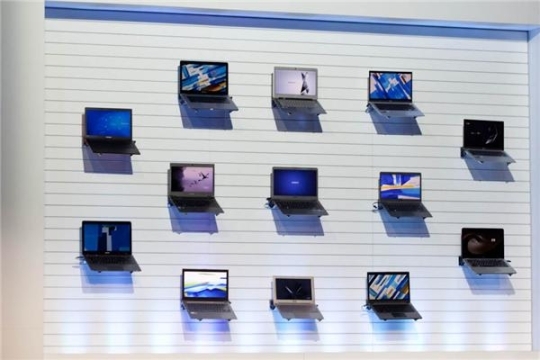Intel's virtual cable TV effort: Can it work?

Intel is reportedly approaching media companies with plans to create a virtual cable network that would bundle television programs and deliver them via an Internet connected set-top box.
The Wall Street Journal reported Intel's plan and said it represents a shift in the chip giant's strategy. Intel via the acquisitions of McAfee clearly wants to be more than just a processor company. Indeed, Intel is already the biggest baddest ingredient brand on the planet.

Intel's meat and potatoes
Surely, Intel's virtual cable TV idea boils down to the usual line: Sell more chips. Cloud computing, data centers, ultrabooks and any ecosystem that goes with them boils down to processor sales for Intel.
That reality is why Intel's virtual cable system idea doesn't seem all that nutty. We'll omit the fact that Intel's ventures into communication chips, operating systems and the like haven't exactly panned out. We'll also overlook the fact that Microsoft explored being a virtual multiple system operator (MSO) for years (and even hired media bigwigs) before punting on the concept. Nevertheless, Intel may just be able to work with media giants. Bernstein Research reckons that seven media giants---Disney; News Corporation; NBC Universal; Time Warner Inc.; CBS; Viacom; and Discovery---account for about 95 percent of all viewing hours in the United States. Disclosure: CBS owns ZDNet.
How could Intel create an virtual cable system? For starters, Intel isn't a threat to media companies. The company historically has been all about the chips. Intel could make a set-top box, bundle channels and create a virtual TV service provider. Intel's cut is that processor in the set-top box and an ecosystem that sells tablets, smartphones and ultrabooks. The chip giant is likely to leave ad revenue alone and merely be another distribution point paying media giants.
In the tech industry, Intel is a bit like Switzerland. The company is largely viewed as neutral and PC and server makers try to sell you a stack of stuff. Microsoft tried to do the virtual cable system via Xbox, but there's an Internet ad conflict there. Apple and Google clearly want to usurp media players in some fashion. Intel would like to overturn the cable company domination, but at least it isn't going to threaten ad dollars.
Bernstein analysts Craig Moffett, Carlos Kirjner and Todd Juenger sent a note out to clients handicapping Intel's cable TV effort.
According to the Wall Street Journal, Intel is the latest in a long line of tech companies to explore the concept of becoming a “virtual cable operator” (or “Virtual MSO”) by delivering a line-up of cable channels over the Internet. Bully for them. And it sounds like they’re almost there. They’ve got the set top box concept down. Now, all they need is… everything else. Content, for example. According to the Journal, they have now asked for “rate cards” from the media companies. Sounds like a great place to start. Good luck and Godspeed, Intel.
Needless to say, the gang at Bernstein is just a little skeptical about Intel's effort. The economic model in TV favors the cable giants. There's just non-economic incentive to unbundle the current model. ESPN gets paid for every household a cable company reaches whether viewers are sports fans or not.
In a January research note, Bernstein reviewed why virtual cable companies---like what Intel is proposing---have failed. To wit:
- Content deals are too expensive.
- Internet delivery of content pushes an unbundled consumption model. Tech giants want to unbundle programs.
- Media players refuse to sell content unbundled and get fat affiliate and distribution feeds from cable giants.
- Video isn't the music industry, which had a gun pointed at its head via Napster.
- And cable giants are formidable. Bernstein analysts Craig Moffett laid the challenges in a January research report.
A Virtual MSO is, in less polite terms, an arbitrage model. Today, Comcast pays about $29 per month for the programming that it resells to consumers for $73. Even if Google (or Apple, or Amazon, or Netflix, or fill-in-the blank) were to pay the content companies more than Comcast – say, $40 per month – for programming, they could still easily undercut the existing distributors by selling the service for, say, $50, and they could still happily pocket the much smaller markup.
Bottom line: Intel has the characteristics to be a virtual cable system, but it won't be easy.